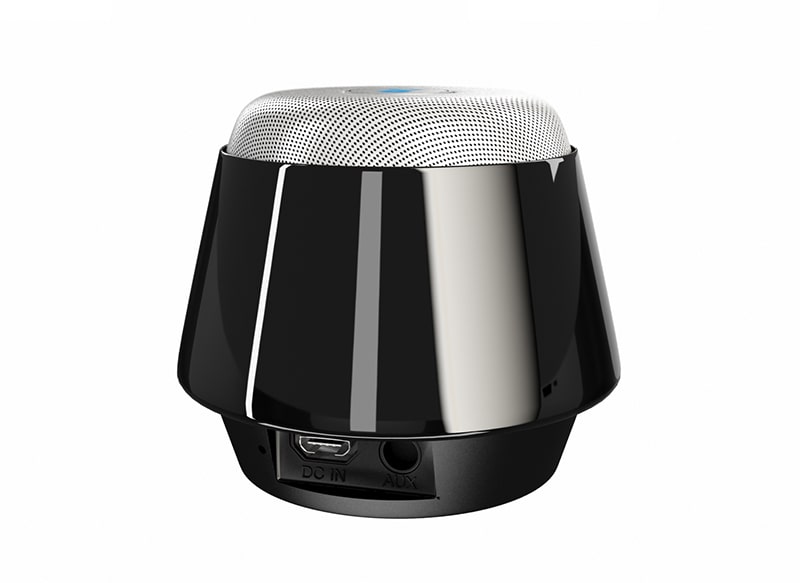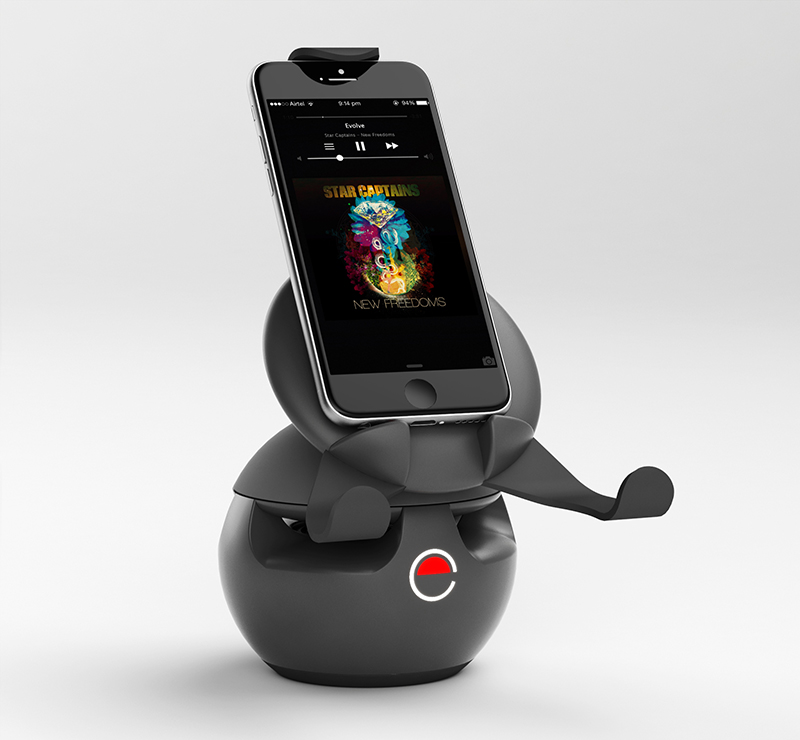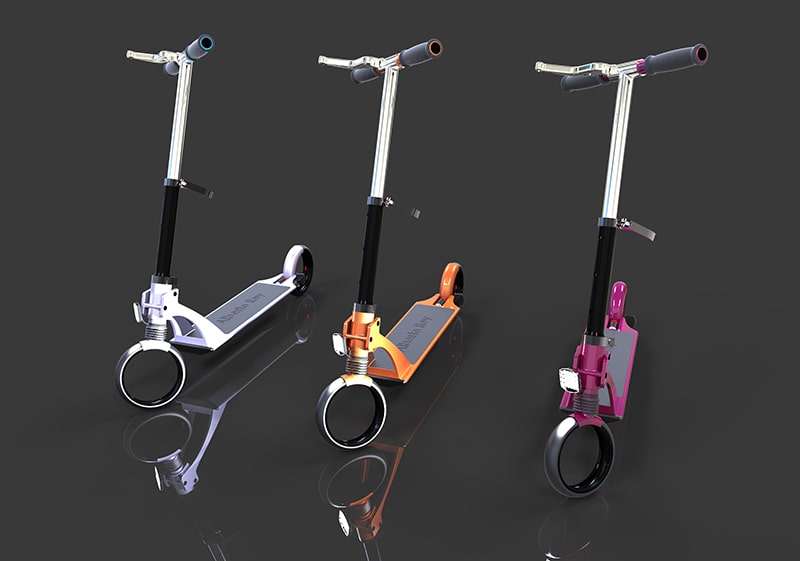3D rendering is a powerful marketing tool that is becoming increasingly commonplace as design software and processing capabilities skyrocket. It has almost completely replaced traditional product photography and studio sessions in industries such as furniture retail.
However, 3D rendering can be applied to far more than just interior design. The ability to visualize objects in lifelike settings makes digital modeling an attractive option on a wide variety of scales, from architecture to fine jewelry and just about anything in between.
While many different types of computer-generated 3D modeling exist, rendering is set apart by its emphasis on photorealistic visualization. To the untrained eye, 3D renderings often cannot be distinguished from professional photographs.
Fully rendered images include material-specific textures, carefully tailored lighting, and incredible levels of detail. These attributes are what make 3D product visualization such an asset to an online marketing campaign.
Consumers can interact with these detailed images to evaluate product quality, functionality, and aesthetic appeal without the need to leave their homes and offices.
So how exactly does the 3D rendering process work?
5 Steps of the 3D Rendering Process
Step 1: Generate a Basic 3D Model
All 3D modeling design begins with the digital equivalent of a rough sketch or outline. T
This set of shapes is refined over and over until it resembles the general shape of the product. At this stage of the rendering process it is also important to designate a point of view that showcases the object in the most comprehensive and informative way possible.
Step 2: Add a Realistic Background
After setting the perspective from which the viewer will interact with the product, the next step in 3D visualization is to add an appropriate background.
Background choice is crucial. It must provide context for the product that enhances the realism of the image and makes it more appealing to consumers, but must not overshadow the item marketed.
Step 3: Create Purposeful Lighting
Adding light and shadow to a 3D rendering is just as important as creating an engaging backdrop. 3D rendering is a form of art and, therefore, relies on light to set the mood of the composition.

Lighting can add ambiance, image depth, and an emotional element to a 3D visualization. Is the setting warm, cool, modern, or inviting, or challenging? Using light to convey these feelings will prompt customer engagement and greatly increases marketing effectiveness.
Step 4: Layer in Textures and Color
This phase separates 3D rendering from other types of 3D modeling and is what truly brings the product to life. Early attempts at photorealistic computer-generated images were often met with complaints that the products were unrealistic and overly polished.
Now, the best artists will add tiny imperfections that contribute to the extremely lifelike quality of the finished image and remove the alienating feeling of computerized perfection.
Step 5: Finish with Decorations and Clean Up in Photoshop.
Image clean-up and the addition of small touches (for example, books on a desk surface or plants on a kitchen window sill) are the final steps in the production of a high-quality 3D visualization.
Benefits of 3D Rendering for New and Existing Product Designs
As mentioned above, photorealistic visualizations are important components of major marketing campaigns, from business-to-business sales to consumer products.
But what makes 3D rendering such a versatile and effective tool for retailers?
First, it is often a much cheaper option than traditional methods of generating promotion-ready images. The results of studio photography sessions can vary greatly in quality, and studios are much more limited in capability than digital design services.
In addition
3D rendering can also provide added security to a promotional campaign, making it a financially responsible route to take. Photorealistic images can be created to feature products which are not yet fully developed. This allows companies to kick off promotions well in advance of creating prototypes.
This facilitates the evaluation of whether the product is worth manufacturing. Businesses can also use this approach to tailor production to actual demand rather than over-producing inventory. It can be a significant advantage for someone trying to introduce a new product to an untested market.
Finally, 3D rendering is an extremely flexible process. Designers can develop, test, adjust, and re-test products until they are satisfied with the results – and all without having to erase a hand-drawn sketch or tear apart a physical prototype.
A wide array of colors and textures can be tested with minimal effort. Old designs can be reshaped to appeal to different markets. New products can be placed in contrasting settings or lighting schemes, viewed at multiple angles, and seamlessly integrated with existing product lines. With computer-generated imagery, the design options are limitless.
With such a diversity of 3D rendering services and methods available, there are myriad ways to incorporate photorealistic computer-generated images into a marketing campaign.

But what is the best option – and more importantly, the one that will significantly increase sales?
It depends on a number of factors. Below are ten ways to utilize 3D visualization to drive sales.
10 Ways to Use 3D Product Visualization to Drive Sales
1. Use 3D Imagery to Create a Rich Visual Story
A great degree of successful marketing relies on a little bit of applied psychology (think product placement, grocery store layout, and sponsored athletes). Creative use of emotion to engage potential buyers and influence customer decision-making is a common marketing strategy and meshes quite nicely with 3D rendering.
Computer-generated images can place a product in the perfect setting and create an emotional link that consumers won’t be able to ignore. This works well for larger-scale products such as landscaping and exterior or interior design.
Who doesn’t want to see their new backyard and Japanese garden lit with the soft glow of an early summer evening before the project has even begun? And being able to imagine a new couch fitting in perfectly with the rest of a carefully furnished, well-loved living room might make the difference between a purchase and a pass.
2. Create Cut-Out Shots
Using cut-away views or layering is another creative way to promote customer engagement and increase sales. The biggest advantage of using 3D rendering to create these types of views is that it removes the necessity of building a separate prototype just to break it down to showcase the product’s inner workings.
Cut-out images lend a sense of transparency to a marketing campaign and allow potential buyers to explore the intricacies of a product. This type of 3D visualization can be used to highlight unique technology or design details,
This approach can be applied very effectively to products in the tech and automotive industries, but are by no means the only areas in which it can be used successfully. 3D cut-away images can be interactive as well – for example, “before” and “after” sliding panels. More ways to add an interactive component will be covered below.
3. Easily Re-Brand Product Lines without Starting a Studio Session from Scratch
As mentioned above, repeated updates to marketing portfolios can quickly become cost-prohibitive if new props, settings, and pieces are required for each iteration.
From a base set of 3D models, however, new campaign looks can be generated and refreshed without major investments of money or time. This might be driven by seasonal marketing like Black Friday or back-to-school sales.
Incorporating new products into an existing line is also much easier when starting with a stock set of computer-generated images. Whatever the underlying reason, re-branding and updating collections with 3D rendering facilitates the goal of “selling purpose”: showcasing the product’s capabilities and versatility in a context that is relevant to its target audiences.
4. Use High-Quality 3D Rendering to Highlight Small Details
While some products are shown to best advantage in grand and evocative settings, others rely on an exhibition of their tiniest details to increase sales. This marketing strategy can be particularly effective for products whose promotional campaigns rely on attracting discerning customers who are looking for the highest possible quality or unique elements of craftsmanship.

For example, 3D visualization can easily emphasize the features of high-end racing bicycles, robotics, or luxury cars. This level of detail and realism can also be an important addition to online catalogs or websites, as it engages remote customers who don’t have the opportunity to closely examine a physical product or prototype.
The addition of 3D rendering to online marketing campaigns is a powerful way to separate a product from its competitors.
5. Create Eye-Catching Visuals for Use on Social Media Platforms
With e-commerce on the rise, companies are paying more and more attention to the marketing strategies that they use on the web. Online marketing comes in many different forms, ranging from banner ads to Instagram sponsored content.
However, the manner in which consumers interact with online advertisement makes it a particularly challenging area for businesses to approach. The essence of the problem is this: how does one create an exhibition that stands out amidst a barrage of advertising, most of which consumers will scroll through and bypass in twenty seconds or less?
As 3D rendering capabilities have advanced, images from computer-generated models have quickly become centerpieces in many social media campaigns. After all, 3D visualization offers hyper-realistic, eye-catching design – exactly the kind of sleek, streamlined, elegant appeal that is essential on sites such as Instagram and Pinterest.
The concept of visual storytelling previously discussed can also be extremely effective in an online setting, particularly on social media platforms that rely on captivating imagery.
6. Use Variations on a Simple Set of Computer-Generated Models to Poll Prospective Consumers
The social media presence of several companies includes recurring polls, which promote customer engagement while simultaneously providing constructive feedback on consumer preferences. Sites such as Facebook and Twitter offer built-in poll options that allow customers to select options and weigh in on potential new product ideas.
Eye-catching visuals are essential in this scenario. And if customers are voting on customizable options – for example, laptop colors or swimsuit designs – then the set of images used should differ as little as possible outside of the variable in question.
Point of view, lighting schematics, and general atmosphere should all be held constant. While this is tricky to do with traditional photography, 3D rendering allows to change a single feature with very little effort while maintaining consistency across an entire collection of images.
7. Present the Consumer with Multiple Points of View
Similar to the concept of pairing emotion and atmosphere with product promotion, creating multiple points of view places a consumer in a setting where they can easily engage with the product. Showing several complementary images of an artsy dining room table and chairs seamlessly integrated with a warm and inviting breakfast nook invites the customer to ask themselves how they would use the item in question.
his creates options for purchase rather than posing potential buyers with a quick “yes” or “no” mental questionnaire. Using multiple points of view is a marketing strategy that works with interior design, or with products that fit into a specific context, such as gear meant for office use or business-to-business sales.

Placing the item in relevant context and providing several angles from which it can be viewed also enables easy judgment of dimensions and comparison with standard pieces. These “lifestyle images” are very effective in ad campaigns where the consumer cannot view a physical product, whether in a catalog or online.
8. Provide Animations, Panoramic Views, or Virtual Tours
This is a newer way to use 3D rendering, but it is quickly becoming popular. Sites like Cad Crowd actually offer a whole line of 3D visualization services tailored specifically to virtual reality applications. The capacity to design interactive and immersive content that puts the spotlight on a product, though, extends far beyond virtual reality and gaming.
9. Offer a Wide Variety of Customizable Styles and Options
Online shoppers place a high value on personal freedom. They have the potential to browse through thousands of online catalogs without leaving a comfortable couch, and can tailor their shopping experience in a very individualized manner.
Products that have a large number of options and special features available can cater to this demand for individuality and are therefore much more marketable than those limited to a smaller set of styles.
With 3D rendering, businesses can demonstrate the full range of available options to online customers, who can scroll through and evaluate different versions of a product until they find an option that meets their criteria.
Having a bigger inventory increases the chance of
10. Use 3D Rendering to Increase Consumer Knowledge
This is a second method to create an authentic, honest shopping experience and remove the feeling of being “advertised at” or “talked down to”, and is another opportunity for companies to build brand loyalty.
A set of photorealistic images that walk a customer through a brand’s engineering process or provide an informative comparison of several products in a collection not only educates the consumer but also increases sales.
This application of 3D rendering works well with technical products. Images can be made available on a business’s website, and will often serve as a jumping-off point for consumers who are familiarizing themselves with a product or looking to compare it to others in the field.
There are many ways to utilize 3D rendering to diversify online visuals, create striking promotional campaigns, and ultimately see an increase in sales.
But how can businesses find high-quality 3D rendering services that match their marketing needs?
Cad Crowd can help!
Cad Crowd is an online platform that pairs companies with vetted, talented 3D modelers. They offer a variety of 3D rendering options that include 3D architectural rendering, 3D landscape rendering, and 3D 360-degree panorama visualizations.
Businesses can select the rendering methods that best match the degree of photorealism required and speed with which the job needs to be performed.
Cad Crowd will then provide a customized plan that fits the project demands. See how it works or get a quote if you’re already looking for a 3D rendering company.

Thanks guys